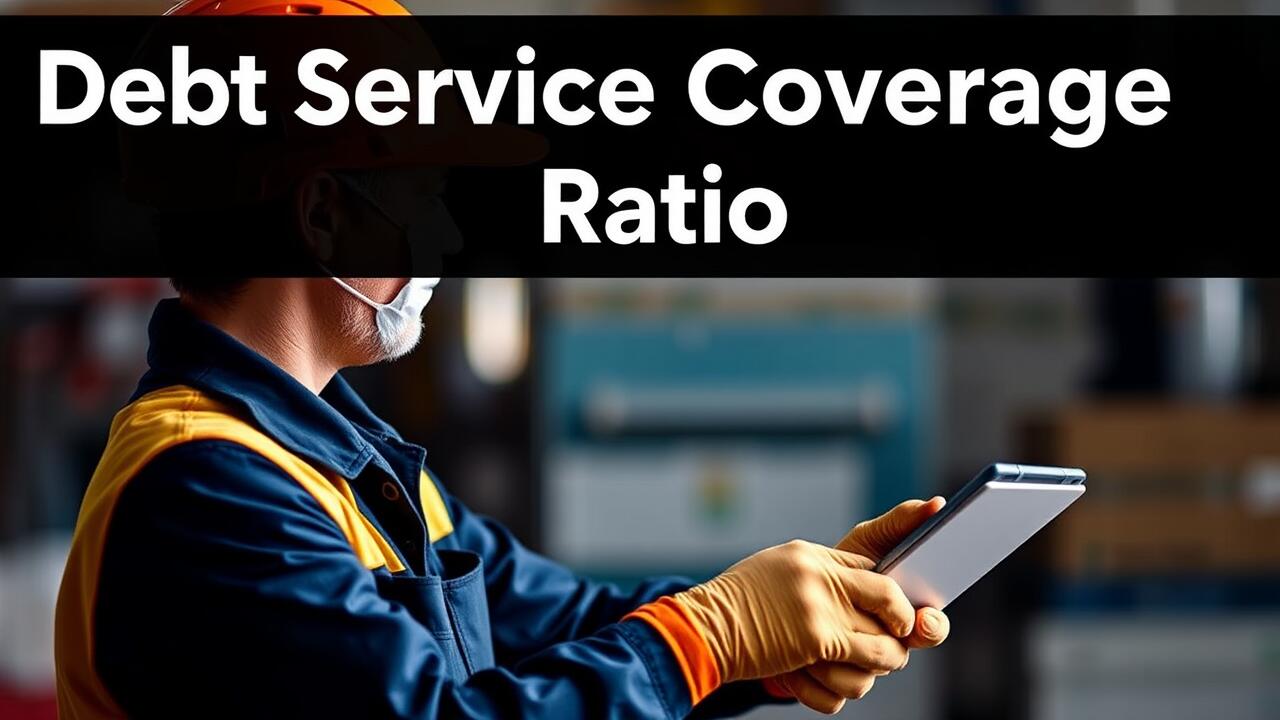
Table Of Contents
Common Misconceptions about DSCR
Many individuals often confuse the Debt Service Coverage Ratio (DSCR) with other financial metrics, leading to misconceptions regarding its importance. Some think that a higher DSCR is always overwhelmingly positive, but it can also signal over-leveraging in certain contexts. A high ratio might indicate that a borrower is generating sufficient income to cover their debts, but it is crucial to consider other financial factors, such as overall debt levels and cash flow stability.
Another common misconception revolves around the threshold values often cited for a good DSCR. While a ratio of 1.25 is frequently presented as a standard benchmark, the ideal DSCR can vary depending on the specific circumstances of the borrower and the lender's requirements. A Debt Service Coverage Ratio Loan may be considered acceptable by some lenders at a lower ratio, especially if the borrower has a strong credit history or additional collateral to back the loan. Understanding the nuances of DSCR is essential for making informed financial decisions.
Debunking Myths Related to DSCR
Many people believe that a high Debt Service Coverage Ratio (DSCR) is always required to secure a loan. This misconception can deter potential borrowers who may have a DSCR that meets lender minimums but is not necessarily high. In reality, lenders often consider various factors beyond just the ratio. Elements such as property value, borrower credit history, and overall market conditions can play substantial roles in the approval process and terms of a loan.
Another common myth suggests that a low DSCR automatically disqualifies a borrower from obtaining a Debt Service Coverage Ratio Loan. While a low ratio may raise red flags and indicate potential financial strain, many lenders are willing to work with borrowers who have alternative strengths. These can include substantial equity, a solid plan for increasing cash flow, or collateral that mitigates risk to the lender. Understanding these nuances can empower borrowers to navigate the lending landscape more effectively.
Benefits of a High DSCR
A high Debt Service Coverage Ratio Loan is beneficial for borrowers in multiple ways. It indicates strong financial health, allowing lenders to view the applicant as a low-risk investment. This can lead to better loan terms, such as lower interest rates and reduced fees. With a favorable DSCR, borrowers are more likely to secure financing for various projects, whether it involves real estate or business expansion.
Lenders also gain advantages from a high DSCR. A robust ratio suggests that borrowers can comfortably meet their debt obligations, reducing the chances of delinquency or default. This reliability enhances the lender's portfolio, facilitating more stable income streams. Furthermore, it builds trust between lenders and borrowers, fostering long-term business relationships. The emphasis on high DSCR ultimately contributes to a healthier lending environment for everyone involved.
Advantages for Borrowers and Lenders
A higher Debt Service Coverage Ratio Loan directly benefits borrowers by providing them with better financing options. Lenders view a strong DSCR as an indicator that the borrower can easily meet their debt obligations. This can lead to more favorable loan terms, such as lower interest rates and reduced fees. Improved borrowing conditions allow individuals and businesses to invest in growth opportunities that otherwise might have been out of reach.
Lenders also gain from a high DSCR as it suggests reduced risk associated with lending to borrowers. A solid Debt Service Coverage Ratio Loan minimizes the likelihood of default, enabling lenders to secure their investments. As a result, financial institutions may choose to offer larger sums or longer repayment periods to those with favorable coverage ratios. This advantageous relationship encourages both parties to foster a healthy lending environment.
Risks of Low DSCR
A low Debt Service Coverage Ratio Loan indicates that a borrower has insufficient income to cover their debt obligations. This situation can lead to difficulties in obtaining financing. Lenders typically prefer a higher DSCR as it signals reliability and the ability to repay loans. When a borrower presents a low ratio, they may face increased scrutiny from lenders, which could result in higher interest rates or even denial of the loan application.
Furthermore, a weak Debt Service Coverage Ratio can negatively impact the borrower's financial health. If the income generated is inadequate to pay off existing debts, this can lead to missed payments and potential default. Over time, such financial mismanagement might result in a damaged credit score, making future borrowing more challenging. Borrowers with a low DSCR may find themselves trapped in a cycle of debt, struggling to improve their financial situation while facing rising costs and commitment pressure.
Consequences of a Weak Debt Service Coverage
A weak Debt Service Coverage Ratio (DSCR) can lead to significant financial challenges for borrowers. Lenders often perceive a low DSCR as an indication of potential difficulties in meeting debt obligations. This perception may result in higher interest rates or more stringent loan terms. Borrowers may find themselves facing limited options when trying to secure financing, as lenders often prefer projects with a more robust DSCR to mitigate risks.
Additionally, a weak DSCR can affect a borrower’s ability to expand or invest in new opportunities. When cash flow is insufficient to cover debt payments, it creates a cycle of financial strain. Borrowers might have to divert funds from growth initiatives to cover shortfalls, which can inhibit long-term success. Understanding the implications of a low DSCR is crucial for maintaining financial health and stability in any investment strategy, especially when pursuing a Debt Service Coverage Ratio Loan.
FAQS
What does DSCR stand for?
DSCR stands for Debt Service Coverage Ratio, which measures a borrower's ability to cover debt obligations with their income.
What is considered a good DSCR loan ratio?
A good DSCR loan ratio is typically above 1.25, meaning the borrower generates 25% more income than needed to cover their debt payments.
Why is a high DSCR beneficial for borrowers?
A high DSCR indicates a strong financial position, making it easier for borrowers to secure loans, obtain favorable interest rates, and demonstrate their ability to manage debt.
What are the risks associated with a low DSCR?
A low DSCR can lead to difficulties in obtaining loans, higher interest rates, and potential financial strain, as it suggests that a borrower may struggle to meet their debt obligations.
How can borrowers improve their DSCR?
Borrowers can improve their DSCR by increasing their income, reducing debt levels, or refinancing existing loans to achieve better terms.



